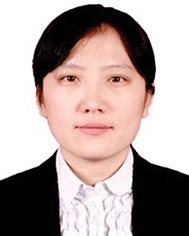Horizons Community Board collection: optical and photonic materials
Xiaolu
Zhuo
 *a,
Li Na
Quan
*a,
Li Na
Quan
 *b and
Qingchen
Dong
*b and
Qingchen
Dong
 *c
*c
aCIC biomaGUNE, Basque Research and Technology Alliance (BRTA), 20014 Donostia–San Sebastián, Spain. E-mail: xzhuo@cicbiomagune.es
bDepartment of Chemistry, Virginia Tech, Blacksburg, VA, USA. E-mail: linaquan@vt.edu
cMOE Key Laboratory of Advanced Display and System Applications, School of Mechanical & Electronic Engineering and Automation, Shanghai University, Shanghai, 200072, China. E-mail: qcdong@shu.edu.cn
Materials Horizons and Nanoscale Horizons set up their Community Boards several years ago, aiming to support early career researchers so that they could share their experiences and ideas on scientific publishing. As future leaders in their respective fields, the Community Boards also provide a channel for members to build relationships across their research community and develop their own editorial skills.
This collection continues a series of post-publication online article collections, led by our Community Board members across both Materials Horizons and Nanoscale Horizons.
Working together and sharing their unique areas of expertise, our Community Board members have recommended several key topics where significant, rapid progress has been made in the last 2 years. They have selected top articles published in the Horizons journals to showcase the most important advances in each topic area.
Optical and photonic materials
Xiaolu Zhuo, Li Na Quan and Qingchen Dong present this Horizons Community Board collection on materials and devices for optics and photonics.Nowadays, optical and photonic materials are closely related to technological progress and are responsible for the growth of entire industries. Accordingly, various materials based on different properties have been widely used in optoelectronic devices or used as low-loss dielectrics for a range of vital optical and photonic components across the infrared wavelength range. In this collection, we have compiled a list of communications and reviews about the applications of optical and photonic materials in various fields, including luminescence, detection, photovoltaics, photodynamic therapy, optical sensing, bioimaging etc. We hope that this collection will bring new inspiration and thoughts to researchers in the field of optoelectronic technology.
Materials
Optical and photonic materials include a wide range of materials that generate, harvest, control, and respond to light and photons, covering materials of different scales from molecules to nano-/micro- particles and structures. The design and preparation methods of new materials, as well as understanding their intrinsic properties, are the foundation of the development of functional optical and photonic devices.Regarding the design of new optical materials, much attention has been paid to luminescent quantum dots (QDs), organic small molecules, and perovskites, due to their crucial roles in bioimaging, sensing, theranostics, and light-emitting devices. This focus includes novel synthesis and fabrication methods, the improvement of luminescence properties, and the discovery of new luminescence mechanisms. Shen et al. reported the synthesis of lead-free FA3Bi2Br9 perovskite QDs with a bright blue emission at 437 nm with a high photoluminescence quantum yield of 52% (DOI: 10.1039/C9NH00685K). Li et al. designed and synthesized a new type of small molecule that coupled rigidity and flexibility to simultaneously achieve good photoacoustic, near-infrared fluorescence, photodynamic, and photothermal properties, enabling multifunctional imaging and therapy (DOI: 10.1039/D0NH00672F). Dunlap-Shohl et al. demonstrated the resonant infrared matrix-assisted pulsed laser evaporation technique for the thin film deposition of a lead-halide-based perovskite, enabling facile optical measurements and device fabrication based on perovskite thin films (DOI: 10.1039/C9MH00366E). A fast and intense X-ray scintillation response was observed from the halide perovskite MAPbBr3 at low temperatures, reaching exceptionally high light yields of >100![[thin space (1/6-em)]](https://www.rsc.org/images/entities/char_2009.gif) 000 ph MeV−1 and sub-nanosecond decay times (Mykhaylyk et al., DOI: 10.1039/C9MH00281B). Strongly anisotropic 2D excitonic resonances were reported by Maserati et al. in a bulk metallorganic chalcogenide [AgSePh]∞ lamellar framework (DOI: 10.1039/C9MH01917K). A detailed study of the charge and energy transfer processes was conducted by Lédée et al. based on their newly developed synthesis of two-dimensional halide perovskites containing 100% of a photoactive tetrazine derivative as the organic spacer in the layered perovskites (DOI: 10.1039/D0MH01904F). Chen et al. reported a new fluorophore with aggregation-induced emission characteristics and explored a new photoactivatable mechanism of photo-induced crystallization with emission enhancement (DOI: 10.1039/D0MH01200A). Okada et al. demonstrated the self-assembly of photochromic molecules into optical microresonator arrays that display switchable whispering gallery mode resonant photoluminescence for rewritable optical memory (DOI: 10.1039/D0MH00566E). Moreover, a few review articles summarized the recent development in polydopamine fluorescent nanomaterials (Yang et al., DOI: 10.1039/C9MH01197H), lanthanide-doped nanoparticles (Marin et al., DOI: 10.1039/D0NH00627K), and copper indium sulfide QDs (Morselli et al., DOI: 10.1039/D1NH00260K).
000 ph MeV−1 and sub-nanosecond decay times (Mykhaylyk et al., DOI: 10.1039/C9MH00281B). Strongly anisotropic 2D excitonic resonances were reported by Maserati et al. in a bulk metallorganic chalcogenide [AgSePh]∞ lamellar framework (DOI: 10.1039/C9MH01917K). A detailed study of the charge and energy transfer processes was conducted by Lédée et al. based on their newly developed synthesis of two-dimensional halide perovskites containing 100% of a photoactive tetrazine derivative as the organic spacer in the layered perovskites (DOI: 10.1039/D0MH01904F). Chen et al. reported a new fluorophore with aggregation-induced emission characteristics and explored a new photoactivatable mechanism of photo-induced crystallization with emission enhancement (DOI: 10.1039/D0MH01200A). Okada et al. demonstrated the self-assembly of photochromic molecules into optical microresonator arrays that display switchable whispering gallery mode resonant photoluminescence for rewritable optical memory (DOI: 10.1039/D0MH00566E). Moreover, a few review articles summarized the recent development in polydopamine fluorescent nanomaterials (Yang et al., DOI: 10.1039/C9MH01197H), lanthanide-doped nanoparticles (Marin et al., DOI: 10.1039/D0NH00627K), and copper indium sulfide QDs (Morselli et al., DOI: 10.1039/D1NH00260K).
In addition, progress has been made on exploring new optical phenomena from other nanoparticles/nanostructures and realizing various lab-demo applications. Yin et al. developed the synthesis of mid-infrared-responsive plasmonic nanonails for molecular detection based on surface-enhanced infrared absorption spectroscopy (DOI: 10.1039/D0NH00244E). Liu et al. demonstrated a dual-responsive photonic liquid using Fe3O4@polyvinylpyrrolidone@poly(N-isopropyl acrylamide) nanoparticles, which allows for the independent modulation of the color brightness and hue (DOI: 10.1039/D1MH00556A). Chu et al. combined the nanoscale self-assembly of cellulose nanocrystals with microscale diffraction grating to achieve freestanding photonic paper with programmable structural color and polarization rotation (DOI: 10.1039/C9MH01485C).
Devices
The inherent advantages of optical and photonic materials endow optoelectronic devices, including photodiodes (PDs) field-effect transistors (FETs) and light-emitting diodes (LEDs), with multiple advantages, such as a strong light response, high carrier mobility, and excellent luminescence characteristics, making them match or even exceed the corresponding performance of amorphous silicon devices. In this context, many researchers have made tremendous efforts to advance the development of optoelectronic devices. Ultraviolet (UV) PDs are highly desired due to their great significance in many applications. Huang et al. (DOI: 10.1039/D0MH00250J) reported ternary copper halide (CsCu2I3) nanowires for the first time, which were used as the light absorber to achieve polarization sensitive and flexible UV photodetector with a photocurrent anisotropy ratio of 3.16. Ma et al. (DOI: 10.1039/D1MH00776A) successfully designed and fabricated visible-blind UV narrowband photomultiplication-type organic photodetectors (OPDs) using TAPC:C60 with a weight ratio of 50![[thin space (1/6-em)]](https://www.rsc.org/images/entities/char_2009.gif) :
:![[thin space (1/6-em)]](https://www.rsc.org/images/entities/char_2009.gif) 1 as the active layer, exhibiting a narrowband response with a full-width at half-maximum of approximately 36 nm, an ultrahigh external quantum efficiency (EQE) of 1.08 × 106% and a remarkable specific detectivity of 1.28 × 1014 Jones at 335 nm wavelength under −14 V bias. In addition, they integrated a flexible UV photomultiplication-type OPD with a flexible OLED to fabricate a wearable UV monitor, which can visually detect the intensity of weak UV light. Light emitting field-effect transistors (LEFETs) are an emerging class of multifunctional optoelectronic device. A color-saturated, high-efficiency red QD hybrid light-emitting field-effect transistor (QD-HLET) with an EQE of 22.8% and a field-effect mobility of 3.1 cm2 V−1 s−1 was demonstrated by the group of Cao (DOI: 10.1039/D0MH00951B). LED technologies, such as organic LEDs (OLEDs), metal halide perovskite LEDs and QD LEDs (QLEDs) have achieved remarkable progress. Thompson's group (DOI: 10.1039/C9MH00195F) described a series of phenanthro[9,10-d]triazole and phenanthro[9,10-d]imidazole based materials which serve as alternatives to carbazoles for achieving high triplet energies as hosts for blue phosphors in OLEDs. Similarly to phosphorescent organometallic emitters, purely organic thermally activated delayed fluorescence (TADF) emitters can recruit both singlet and triplet excitions for light emission and hence achieve 100% internal quantum efficiencies (IQE). Recently, a Focus article on the exciton harvesting mechanism of TADF materials from the same group (DOI: 10.1039/D0MH00276C) systematically introduced the routes for efficient radiative decay from S1 and T1 states and described the TADF process in depth. Costa et al. (DOI: 10.1039/D0MH00503G) presented a new family of bio-hybrid light-emitting diodes (Bio-HLEDs) with silk fibroin as a packaging matrix and fluorescent proteins as emitters. List-Kratochvil et al. (DOI: 10.1039/D0MH00512F) reported a perovskite LED based on inkjet-printed MAPbBr3 active layer for the first time. QLED technology has emerged for next-generation smart displays due to the demand for higher color saturation and higher electrical stability. The progress of QLED technology for next-generation displays is summarized by Kim et al. (DOI: 10.1039/D0NH00556H). Greenham et al. (DOI: 10.1039/C8MH01122B) reported an efficient donor–acceptor QD system by embedding a relatively small fraction of well-passivated acceptor QDs. Yang et al. (DOI: 10.1039/D0NH00606H) explored the solution-processed fabrication of tricolored white lighting QLEDs based on the novel combination of three environmentally benign primary color emitters of blue and green ZnSeTe and red Zn–Cu–In–S QDs.
1 as the active layer, exhibiting a narrowband response with a full-width at half-maximum of approximately 36 nm, an ultrahigh external quantum efficiency (EQE) of 1.08 × 106% and a remarkable specific detectivity of 1.28 × 1014 Jones at 335 nm wavelength under −14 V bias. In addition, they integrated a flexible UV photomultiplication-type OPD with a flexible OLED to fabricate a wearable UV monitor, which can visually detect the intensity of weak UV light. Light emitting field-effect transistors (LEFETs) are an emerging class of multifunctional optoelectronic device. A color-saturated, high-efficiency red QD hybrid light-emitting field-effect transistor (QD-HLET) with an EQE of 22.8% and a field-effect mobility of 3.1 cm2 V−1 s−1 was demonstrated by the group of Cao (DOI: 10.1039/D0MH00951B). LED technologies, such as organic LEDs (OLEDs), metal halide perovskite LEDs and QD LEDs (QLEDs) have achieved remarkable progress. Thompson's group (DOI: 10.1039/C9MH00195F) described a series of phenanthro[9,10-d]triazole and phenanthro[9,10-d]imidazole based materials which serve as alternatives to carbazoles for achieving high triplet energies as hosts for blue phosphors in OLEDs. Similarly to phosphorescent organometallic emitters, purely organic thermally activated delayed fluorescence (TADF) emitters can recruit both singlet and triplet excitions for light emission and hence achieve 100% internal quantum efficiencies (IQE). Recently, a Focus article on the exciton harvesting mechanism of TADF materials from the same group (DOI: 10.1039/D0MH00276C) systematically introduced the routes for efficient radiative decay from S1 and T1 states and described the TADF process in depth. Costa et al. (DOI: 10.1039/D0MH00503G) presented a new family of bio-hybrid light-emitting diodes (Bio-HLEDs) with silk fibroin as a packaging matrix and fluorescent proteins as emitters. List-Kratochvil et al. (DOI: 10.1039/D0MH00512F) reported a perovskite LED based on inkjet-printed MAPbBr3 active layer for the first time. QLED technology has emerged for next-generation smart displays due to the demand for higher color saturation and higher electrical stability. The progress of QLED technology for next-generation displays is summarized by Kim et al. (DOI: 10.1039/D0NH00556H). Greenham et al. (DOI: 10.1039/C8MH01122B) reported an efficient donor–acceptor QD system by embedding a relatively small fraction of well-passivated acceptor QDs. Yang et al. (DOI: 10.1039/D0NH00606H) explored the solution-processed fabrication of tricolored white lighting QLEDs based on the novel combination of three environmentally benign primary color emitters of blue and green ZnSeTe and red Zn–Cu–In–S QDs.
Advanced methods and characterization
To understand the fundamental physical science in optical and photonic materials, using advanced methods and characterizations are a prerequisite to further developing the materials for practical applications. Materials with periodic patterns of nano- to micro-scale pores have been used for photonic applications for decades, however, the characterization of the pore size distribution, pore curvature and specific surface area has been limited by using electron microscopy and nitrogen absorption (BET) methods. Welborn et al. employed small-angle X-ray scattering (SAXS) as a reciprocal space characterization tool that can provide statistically representative microstructure information in a wide range of materials (DOI: 10.1039/C9NH00347A). In organic light-emitting materials, the triplet state is one of the major exciton loss channels involved in the degradation of light-emitting devices. To study the non-emissive triplet state, Grüne et al. developed transient optically detected magnetic resonance to detect the paramagnetic spin states of the luminescence organic materials. Such triplet excitons in organic luminescence materials can also be converted to singlets on TADF materials and then transferred to the fluorescent material by long-range Förster energy transfer (DOI: 10.1039/D1MH00999K). Haase et al. employed various optical spectroscopy tools to investigate Dexter energy transfer from the TADF triplet state to the non-emissive triplet of the fluorescence light emitters, which is the key loss mechanism in light-emitting devices (DOI: 10.1039/D0MH01666G). In excitonic organic semiconductors, it is important to understand the nature of electron and hole separations under photoexcitation. To have a deeper understanding of photoinduced charge separation in donor/acceptor heterojunctions, Kang et al., utilized pump–probe ultrafast transient absorption spectroscopy and time-resolved microwave conductivity techniques. They found that the rigid bonds and low reorganization energy, as well as the highly delocalized charge carriers in single-walled carbon nanotubes, limit the formation of the charge transfer state in heterojunctions (DOI: 10.1039/D0MH01810D). In the area of developing efficient light-emitting materials, the use of theoretical tools, such as machine learning/artificial intelligence, can further support to predict the structure and property relationships etc. Parker et al. directly compared the supervised and unsupervised approaches and used artificial neural networks to determine the emitting wavelengths in fluorescent silicon QDs (DOI: 10.1039/D0NH00637H).| This journal is © The Royal Society of Chemistry 2021 |



